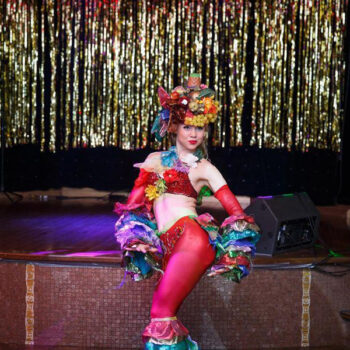Most Popular Latin Dances
Latin dance is a vibrant and exciting form of dance that has captured the hearts of millions around the world. This dance style originated in Latin America and has since spread globally, becoming one of the most popular dance styles in the world. In this article, we will explore the history of Latin dance, the different types of Latin dance, and what makes it unique.
History of Latin Dance
Traditional dances have their roots in Latin America, where they originated in the early 20th century. The dance style was heavily influenced by African and European dances, which were brought to the continent by the colonizers. Over time, Latin dance evolved into a unique blend of cultural traditions that included elements of music, dance, and folklore.
Latin Dance Origin
As mentioned earlier, Latin dance originated in Latin America and was heavily influenced by African and European dance styles. The dance style became popular in the 1920s and 1930s in countries like Cuba, Puerto Rico, and Brazil, where it was embraced by the local communities and eventually spread throughout the world.
One of the earliest forms of Latin dance was the salsa, which originated in Cuba in the 1920s. It was heavily influenced by African slaves' drumming and Spanish folk dances and quickly became popular among the working-class communities of Havana. From there, it spread to other Latin American countries and eventually to the United States, where it became a mainstream dance style in the 1970s.
Another popular Latin dance style is the tango, which originated in Argentina in the late 19th century. It was a fusion of European and African dance styles and became popular in the working-class neighborhoods of Buenos Aires. The Argentine tango has since spread throughout the world and is now one of the most recognizable Latin dance styles.
Other popular Latin dance styles include the cha-cha, rumba, and samba. Each dance style has its unique steps and footwork, but all share a common emphasis on rhythm, passion, and expression.
Today, Latin dance is enjoyed by people of all ages and backgrounds around the world. It is often performed competitively and socially and is a popular form of exercise and entertainment. Whether you're looking to improve your coordination, meet new people, or simply have fun, Latin dance is a great way to get moving and express yourself through movement.
5 Types of Latin Dance
There are many different types of Latin dance styles, each with its unique characteristics and origins. Below are five of the most popular types of Latin dance:
- Salsa - This is perhaps the most popular Latin dance style, and it originated in Cuba. Salsa is known for its fast-paced footwork and its lively, upbeat music.
- Bachata - Bachata is a slower, more sensual dance style that originated in the Dominican Republic. It is known for its romantic music and intimate partner Latin dance moves.
- Cha cha cha - This dance style originated in Cuba and is known for its syncopated rhythm and playful footwork. The cha-cha is a fun, energetic dance that is often seen in ballroom dance competitions.
- Rumba - Rumba is a slow, romantic dance that originated in Cuba. It is known for its sensual hip movements and dramatic pauses.
- Merengue - This is a fast-paced dance style that originated in the Dominican Republic. It is known for its simple footwork and catchy music.
Latin Dance Styles Names and List
In addition to the five types of Latin dance styles mentioned above, there are many other types of Latin dance. Some other popular Latin American styles include:
- Samba;
- Tango;
- Paso Doble;
- Jive;
- Bolero;
- Mambo;
- Cumbia.
Latin Dance vs Standard Dance
Aside from differences in music and footwork, another key difference between Latin dance and traditional dance is the way dancers hold themselves. In standard dance, dancers often hold themselves upright and maintain a formal posture, while in Latin dance, dancers tend to have a more relaxed and grounded posture.
Furthermore, Latin dance often involves more dramatic movements, such as dips and drops, whereas standard dance typically emphasizes grace and fluidity. The two dance styles also have different dress codes, with standard dancers often wearing more formal attire such as ballroom gowns, while Latin dancers tend to wear shorter, more colorful outfits that allow for ease of movement.
How to Dance Latin Style?
Learning to dance traditions in Latin style requires a combination of rhythm, coordination, and practice. The best way to learn is by taking classes with a qualified instructor who can teach you the proper footwork and partner dance moves. It is also important to practice regularly, both on your own and with a partner.
To get started with Latin dance, it's important to have a basic understanding of the music and rhythm. The most important thing is to feel the beat of the Latin music and move your body in time with it. This can be challenging at first, but with practice, it will become more natural.
Once you have a feel for the rhythm, it's time to start learning the basic steps. Each type of Latin dance has its unique steps and footwork, so it's important to focus on one dance style at a time. Practice the basic steps until they become second nature, and then start adding in more complex footwork and partner dance moves.
When dancing with a partner, it's important to maintain good posture and communication. Your partner should be able to feel your movements and respond to them, so it's important to stay in sync. Focus on leading or following, depending on your role in the dance, and always maintain eye contact with your partner.
Finally, remember that Latin dance examples are all about having fun and expressing yourself. Don't be afraid to let loose and show your personality on the dance floor. With practice and dedication, you can become a skilled Latin dancer and enjoy the many benefits of this exciting and passionate dance style.
The Benefits of Incorporating Latin Dance into Your Fitness Routine
Latin dance is not only a fun and exciting way to express yourself and connect with others, but it also provides several health benefits. One of the main benefits of Latin dance is improved cardiovascular health, as the fast-paced movements help to increase heart rate and blood flow. Additionally, Latin dancing can help to improve coordination, balance, and flexibility, while also providing a great full-body workout.
Another benefit of incorporating Latin dance into your fitness routine is stress relief. Sports ballroom dancing can help to reduce stress and anxiety, as well as improve mood and mental health. It provides an opportunity to let loose and have fun, which can be especially important during times of high stress or anxiety.
Additionally, Latin dance is a great way to improve social skills and build confidence. Participating in social dance classes and events provides an opportunity to connect with others who share a common interest in Latin dance and culture, and can help to improve communication skills and social confidence.
What Culture is Latin Dance?
Latin dance is a reflection of the diverse cultures of Latin America, including those of Mexico, Cuba, Puerto Rico, Brazil, and many other countries. Latin dance has roots in African and Spanish cultures, as well as European influences from Portuguese colonizers.
Latin dance has played an important role in cultural expression and celebration in Latin American countries for centuries. Today, Latin dance is celebrated around the world as a vibrant and passionate dance style that embodies the spirit of Latin American culture.
What are Latin Dances Known for?
In addition to their energetic music and complex footwork, social Latin dances are known for their playful and flirtatious partner dance moves. These include sensual hip movements, intricate spins, and close embraces. Latin ballroom dances are often characterized by a strong sense of rhythm and syncopation, with dancers moving in sync with the beat of the music.
Social Latin American dances are also known for their cultural diversity, with each dance style reflecting the unique traditions and cultural influences of different Latin American countries. For example, the samba originated in Brazil, while the merengue originated in the Dominican Republic. This diversity is what makes Latin dance such a rich and exciting dance style, with something for everyone to enjoy.
The Role of Modern Latin Dance in Popular Culture
Latin dance has played a significant role in popular culture throughout history. From the early days of salsa and mambo to the modern fusion styles of reggaeton and urban Latin, the evolution of Latin American dance has been shaped by the changing cultural and musical landscapes of Latin America and beyond. Today, Latin dance continues to influence popular culture around the world, from music videos and movies to fashion and social media.
One of the reasons why Latin dance has become so popular is its accessibility. Unlike other dance styles that require formal training or a certain level of skill, Latin dance is easy to learn and can be enjoyed by people of all ages and backgrounds. Latin dance classes and events provide an opportunity for people to come together and celebrate Latin American culture while also having fun and staying active.
Another reason why Latin dance has become so popular in popular culture is its ability to bring people together. Latin dance events and competitions are often social gatherings that provide a sense of community and belonging. They offer an opportunity for people to connect with others who share a common interest in Latin dance and culture.
In conclusion, Latin dance has played an important role in popular culture throughout history, and its influence continues to grow today. Whether you're a seasoned dancer or a beginner, Latin dance offers a fun and accessible way to stay active, connect with others, and celebrate the vibrant and colorful cultures of Latin America.




